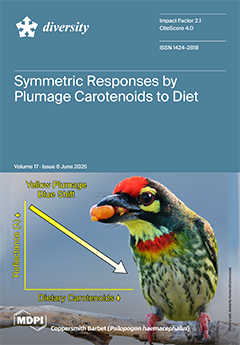Conservation of ecologically important freshwater mussels is high on the international agenda, but there is only limited knowledge about the status of rare unionid species in arid and semi-arid areas which are particularly vulnerable. One such example concerns
Anodonta vescoiana which was recognized as one of the few endemic species of unionid mussels from Iraq and was restricted to the marshes of southern Mesopotamia and its connected river systems. The last confirmed report of
A. vescoiana was in 2009 from the Al-Ezz River. We conducted extensive field surveys during the years 2021 and 2022 at approximately 20 freshwater sites, but we failed to observe any live or dead specimens, suggesting a probable extirpation or severe decline. In contrast, we documented the invasive
Sinanodonta woodiana at numerous sites across the Tigris–Euphrates basin including the Al-Ezz River. This documentation of
S. woodiana indicates successful establishment of the species and colonization of freshwater systems modified by anthropogenic practices, which include alterations of hydrological dynamics and ecological conditions. Here, we compile existing evidence of the global ecological impacts and development of
S. woodiana invasion, while also highlighting Iraq as an important example of the displacement of native unionid mussel species by invasive alien unionids. We assessed the factors that contributed to the disappearance of
A. vescoiana in Iraq including biological competition (with
S. woodiana), salinity stress, habitat fragmentation, and pollution. The time window to act and prevent the further decline of rare unionid species in Iraq, as well as other arid and semi-arid areas which face similar threats, is short. Urgent actions include systematic monitoring to identify remnant populations, implementing biosecurity policies (for fisheries or habitats), and restoration (of habitats) to secure the long-term persistence of remaining unionid diversity.
Full article





